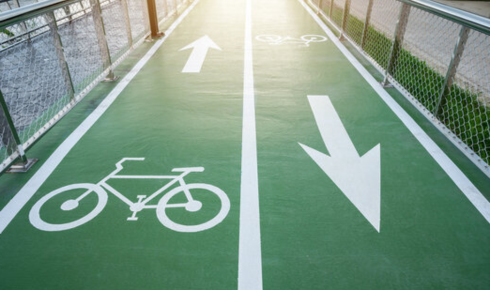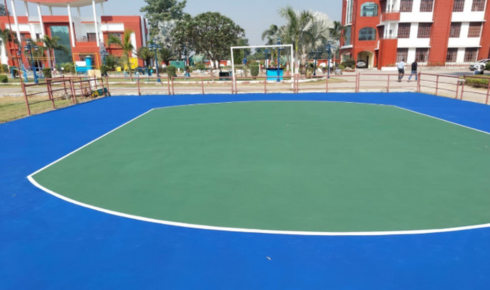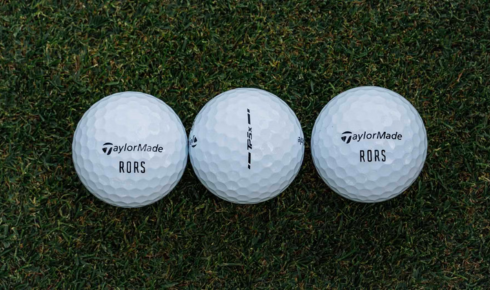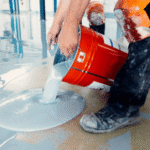As Indian cities transition into smart, sustainable urban spaces, one of the most notable transformations has been in how people move. Cycling, once seen as a basic means of transportation, has now been embraced by planners as an essential element of eco-friendly, health-conscious infrastructure. Public cycle tracks are now a key feature in the blueprint of modern urban design. But for these tracks to deliver on their promise of safety, speed, and durability, the choice of surface material becomes critically important. That’s why many smart cities across India are opting for cycle acrylic flooring—a surface solution engineered to handle weather, wear, and fast-paced commuting.
Acrylic-coated tracks are becoming increasingly common in city parks, green corridors, townships, and urban business districts. These smooth, slip-resistant surfaces offer a riding experience that is far superior to traditional asphalt or cement paths. Constructed using layers of synthetic flooring materials applied over a synthetic ground, these tracks offer a seamless riding surface designed for comfort, control, and long-term performance. For city officials, developers, and transport engineers, the decision to use acrylic flooring is both practical and strategic—it ensures infrastructure longevity while enhancing public satisfaction.
Acrylic Flooring: Engineered for Urban Performance
The success of a cycle track surface depends greatly on the consistency, smoothness, and safety of its surface. Traditional road-based materials like concrete and tarmac are prone to cracking, erosion, and water retention—factors that can make cycling uncomfortable or even hazardous. In contrast, acrylic flooring provides a non-slip, weather-resistant, and rider-friendly solution. Made from advanced synthetic flooring materials, this flooring system is applied in layers, starting with a base preparation over a synthetic ground, followed by an acrylic floor paint layer for color and traction, and sealed with a high-performance acrylic floor finish for durability and surface protection.
Every component of this layered system is optimized to support cycle movement. The base creates a firm, stable foundation. The middle layers offer textured grip, minimizing the risk of skidding or slipping. The top acrylic floor finish adds longevity by shielding the surface from sunlight, moisture, and daily wear. Combined, these layers form a resilient, low-maintenance surface that can handle both high-speed cycling and casual city rides with ease.
Designed for All Seasons, All Riders
Indian cities face diverse and often harsh weather conditions. From extreme summer heat and UV exposure to monsoon rains and urban dust, outdoor surfaces are constantly under environmental stress. Public infrastructure must endure without requiring frequent repairs or resurfacing. Acrylic-based synthetic court systems are designed precisely for such endurance. The materials used in acrylic floors are UV-stable, non-porous, and weatherproof. This makes cycle tracks usable year-round, even shortly after rain, thanks to their fast-drying, water-repelling properties.
In addition to weather resilience, the smooth texture and grip of the acrylic floor offer enhanced safety. For everyday cyclists—be it schoolchildren, fitness enthusiasts, or office commuters—these qualities help prevent falls and ensure a stable ride. The surface also reduces vibration, improving comfort during long commutes. The result is a city cycle track that’s not just functional but genuinely enjoyable for riders of all ages and skill levels.
Customization and Urban Integration with Court Paint
Beyond functionality, visual design plays a major role in how well public infrastructure is received. Cycle lanes in smart cities must be clearly visible, easy to navigate, and aesthetically pleasing. Acrylic cycle track floor paint offers a wide range of color options that allow city planners to integrate branding, color-coded lanes, safety markers, and logos into the design of the floor court. This visual clarity improves navigation, especially in areas with mixed-use pedestrian zones, and elevates the appearance of urban mobility corridors.
Unlike ordinary road paint that fades quickly under sun and traffic, acrylic floor paint retains its color and vibrancy for years. When sealed with a high-quality acrylic floor finish, it forms a durable coating that resists fading, peeling, and scuffing even under heavy bicycle traffic. The combination of longevity and visual appeal makes acrylic-coated cycle tracks an easy favorite for municipalities aiming to build infrastructure that not only works well but also looks modern and inviting.
Low Maintenance, High Longevity
One of the biggest challenges in managing public cycling infrastructure is keeping it in usable condition without incurring high maintenance costs. Unlike conventional roads that require frequent patching, resurfacing, and repainting, acrylic floors need very little upkeep. Their sealed surfaces prevent dust buildup, algae growth, and water seepage. Regular sweeping and occasional cleaning are generally sufficient to maintain a clean, safe cycling surface.
Moreover, when the surface eventually begins to show signs of wear, it can be refreshed with a new layer of acrylic floor paint and topcoat without having to dismantle the synthetic court base. This efficient maintenance cycle significantly lowers long-term costs for city administrations. With an average lifespan of 7 to 10 years before major resurfacing is needed, acrylic flooring offers an excellent return on investment for smart city infrastructure.
Why Smart Cities Are Choosing Acrylic Sport Courts
In smart city masterplans across India, there’s a strong emphasis on multi-use public infrastructure. Many acrylic cycle track projects now double as cycling corridors during specific times of the day or as part of connected mobility zones. Acrylic flooring fits perfectly into this approach due to its versatility. Originally developed for tennis, basketball, and multi-purpose courts, the same synthetic flooring technology is now being adapted for dedicated cycling infrastructure. Its cross-sport adaptability, high endurance, and low environmental impact make it the flooring of choice for forward-thinking urban planners.
Moreover, using acrylic systems promotes sustainability. These flooring systems are low-VOC and environmentally friendly during installation. The ability to refurbish rather than rebuild makes them even more appealing for cities striving to reduce construction waste and carbon emissions.
Conclusion
Smart cities are defined by smart decisions—and choosing acrylic flooring for public cycle track flooring is one such decision. With its combination of weather resistance, rider comfort, low maintenance, and design flexibility, acrylic-based synthetic flooring systems are transforming how India rides. As cycling becomes more than just a sport and evolves into a daily necessity, having infrastructure that supports this transition is essential.
From the solid synthetic ground foundation to the vibrant layers of court paint and the tough final seal of the acrylic floor finish, every component of an acrylic cycle track is engineered for long-term success. It’s no surprise that more Indian smart cities are choosing acrylic-coated floor courts as the surface of the future—for cyclists, communities, and climate-conscious development.










